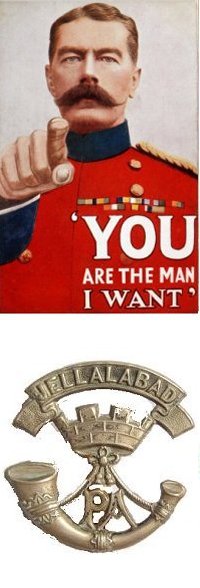yeovil at War
Edward Holland
Killed in action during the Somme Offensive
Edward Holland was born around 1895 at Yeovilton and apparently lived in the village his whole life but, yet again, some confusion surrounds him as there simply are no records by anyone of that name in or around Yeovilton during this period (or, indeed, Yeovil). His father is known to have been William Holland of Yeovilton but the only married William Holland of this time had a son called Edwin born around 1895, and it is therefore assumed that Edward and Edwin are the same person.
Agricultural labourer William H Holland (b1859, Yeovil) was married to Elizabeth Jane née Fear (b1865, Sutton Montis) and they had seven children; Annie Beatrice (b1890), Edwin William / Edward (b1895), Percival John (1897-1983), Evelyn Maud (1899-1983), Harold Frank (1903-1987) and Arthur Frederick (1907-1945).
In the 1901 census the family were living at 3 High Street, Yeovilton, and were still in the village at the time of the 1911 census. 15-year old Edwin / Edward gave his occupation as a cowman on a farm.
 Edward
enlisted in
Yeovil, joining
7th (Service)
Battalion,
Somerset Light
Infantry. His
Service Number
11379 suggesting
he enlisted
during the early
months of 1915.
Edward
enlisted in
Yeovil, joining
7th (Service)
Battalion,
Somerset Light
Infantry. His
Service Number
11379 suggesting
he enlisted
during the early
months of 1915.
The 7th Battalion had been formed at Taunton in September 1914 and came under command of 61st Brigade, 20th (Light) Division. In July the Battalion was sent to France, landing at Boulogne ion 24 July 1915.
On 25 September the 6th, 7th and 8th Battalions of the Somersets became embroiled in the Battle of Loos. This was the British Army's contribution to the major Allied offensive launched simultaneously with the main French offensive in Champagne. It was the biggest British attack of 1915.
A continuous preliminary bombardment, which showered 250,000 shells on to the German defences over four days, had little real effect. Before sending in the infantry on the morning of 25 September 1915, the British released 140 tons of chlorine gas from 5,000 cylinders placed on the front line to make up for the ineffective artillery barrage. This was the first time the Allies had used the weapon, coming after the Germans employed gas to terrible effect at Ypres in April earlier in the year, and it was hoped it would annihilate the Germans at Loos. However a change in the direction of the wind at several points along the front blew the gas back into the British trenches, causing seven deaths and injuring 2,600 soldiers who had to be withdrawn from the front line. Initially the gas attack created panic among the Germans and close to 600 men were gassed. Despite the setbacks caused by the wind 75,000 British infantrymen still flowed out from the trenches when the order came. British losses at Loos were exceptionally high with 50,000 casualties, including at least 20,000 deaths.
During the Battle of Loos, the 21st Division suffered over 3,800 casualties and took the rest of the year to rebuild. Apart from the grueling day-to-day fighting, the next major conflict the 7th Battalion were to fight in was the Battle of the Somme that lasted from July to November 1916.
The Battle of the Somme opened on 1 July 1916, the worst single day in the history of the British Army, with over 19,000 British soldiers killed and 38,000 wounded. The British Army suffered, over the course of the entire 142-day campaign, some 415,000 casualties, including Edward Holland who was killed in action on 16 September 1916. He was aged just 21. The Somme campaign involved some twelve separate battles and finally came to an end on 18 November 1916.
Edward Holland is remembered on Pier and Face 2A Thiepval Memorial. His name is inscribed in the Somerset County Roll of Honour in St Martin’s Chapel, Wells Cathedral and (despite spending his whole life in Yeovilton) is also on the War Memorial in the Borough.
gallery

The Commonwealth War Graves Commission certificate in memory of Edward Holland.